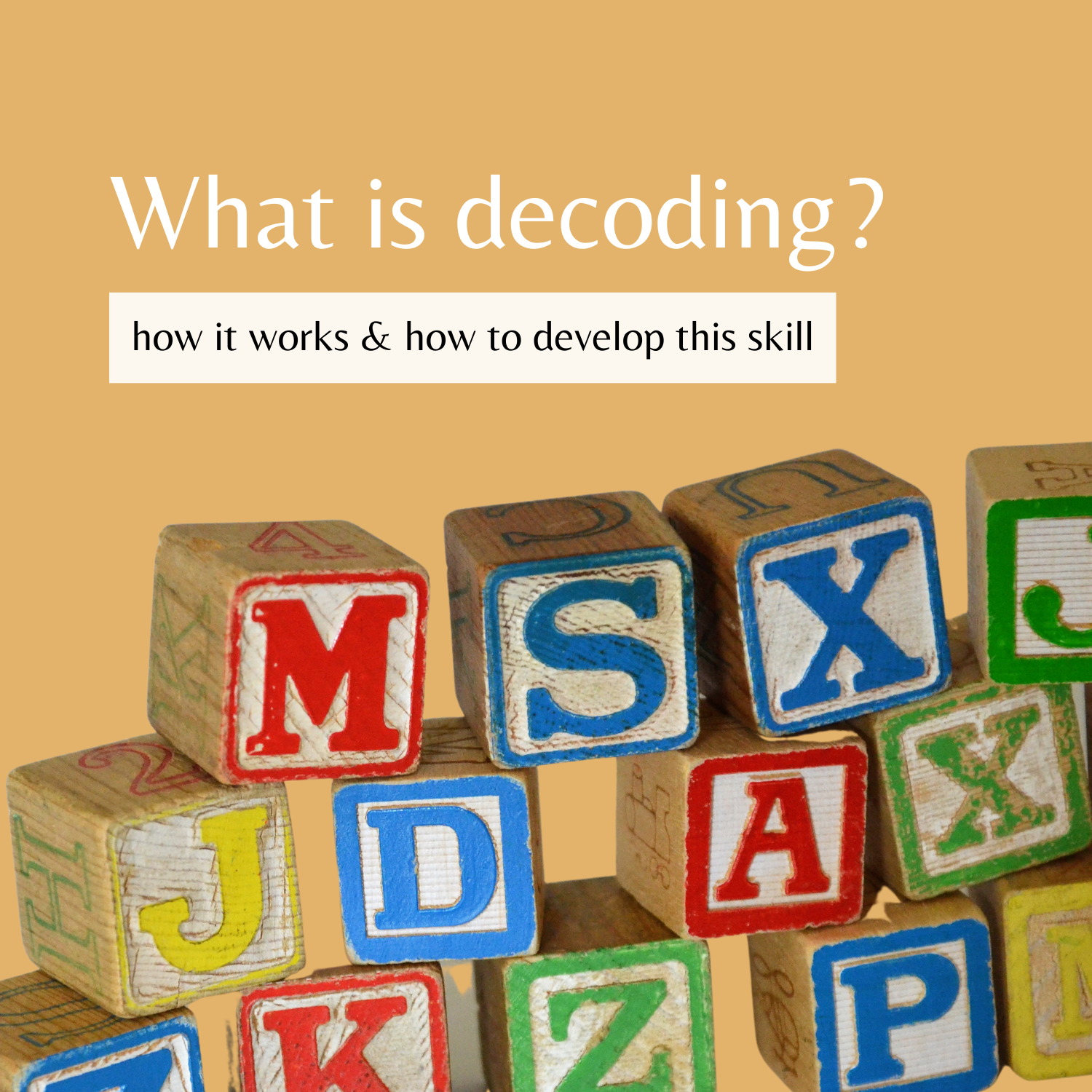What is Decoding?
Decoding is the process of translating written or printed text into spoken language. It is a fundamental skill in reading, and it allows individuals to understand and pronounce words on a page or screen. Decoding involves recognizing the symbols (usually letters or characters) and associating them with the sounds (phonemes) they represent in the spoken language.
Here's how the decoding process works:
Recognition of Symbols: The reader identifies the letters or characters in a word.
Association with Sounds: The reader associates each letter or character with the corresponding sounds (phonemes) they represent in the spoken language.
Blending Sounds: The reader blends the individual sounds together in the correct order to form the word.
Word Pronunciation: The reader pronounces the word based on the sounds they have blended together.
Comprehension: Once the word is pronounced, the reader processes the meaning of the word in the context of the sentence or passage they are reading.
Effective decoding is essential for reading fluency and comprehension. It allows readers to accurately and efficiently recognize and pronounce words as they read, which, in turn, enables them to understand the text and derive meaning from it. Decoding is a foundational reading skill, and it is often taught in conjunction with phonics, which is the systematic instruction of letter-sound relationships.
As readers become more proficient in decoding, they can tackle increasingly complex texts and expand their reading skills. Developing strong decoding skills is a critical component of early literacy education and lays the groundwork for successful reading and comprehension throughout one's educational journey.
Developing a child's decoding skills is crucial for their reading development. Here are some effective strategies you can use to help your child improve their decoding skills:
Phonemic Awareness Activities:
Engage in activities that strengthen phonemic awareness, such as rhyming games, segmenting words into individual sounds, and blending sounds together to form words.
Phonics Instruction:
Teach phonics systematically and explicitly. Start with basic letter-sound relationships and gradually introduce more complex phonics rules and patterns.
Decodable Books:
Provide decodable books that align with your child's phonics and decoding skills. These books contain words that can be sounded out based on the skills they have learned.
Sight Words:
Teach high-frequency sight words (words that don't follow regular phonetic patterns) separately, as they are commonly encountered in reading. Encourage your child to memorize these words.
Word Families:
Explore word families (e.g., -at, -an, -ing) to help your child recognize common patterns in words. This can make decoding unfamiliar words easier.
Context Clues:
Encourage your child to use context clues from the surrounding words and sentences to guess the pronunciation and meaning of unfamiliar words.
Fluency Practice:
Encourage your child to read regularly to build fluency. Repeated readings of texts at an appropriate level can improve accuracy and speed in decoding.
Word Games:
Play word games like Scrabble, Boggle, or word search puzzles to reinforce letter-sound relationships and expand vocabulary.
Reading Aloud:
Read aloud to your child and have them read aloud to you. This helps improve pronunciation, expression, and overall decoding abilities.
Phonological Awareness Games:
Engage in phonological awareness games like "I Spy" (identifying objects that start with specific sounds) or rhyming games to strengthen sound recognition.
Structured Literacy Programs:
Consider enrolling your child in a structured literacy program, which provides a comprehensive and systematic approach to teaching decoding skills.
Monitor Progress:
Continuously assess and monitor your child's decoding progress to identify areas that may need additional support. Adjust your instruction based on their individual needs.
Patience and Encouragement:
Be patient and provide positive reinforcement. Encourage your child to take risks and not be discouraged by mistakes. Celebrate their successes in decoding.
Read Together:
Read books together and discuss them. Encourage your child to ask questions and make predictions about the text, promoting both decoding skills and comprehension.
Visit the Library:
Take regular trips to the library to expose your child to a wide variety of reading materials. Let them choose books that interest them, which can motivate them to practice decoding.
Remember that developing decoding skills is a gradual process, and children progress at their own pace. Tailor your approach to your child's individual needs, interests, and abilities, and create a positive and supportive reading environment at home.

